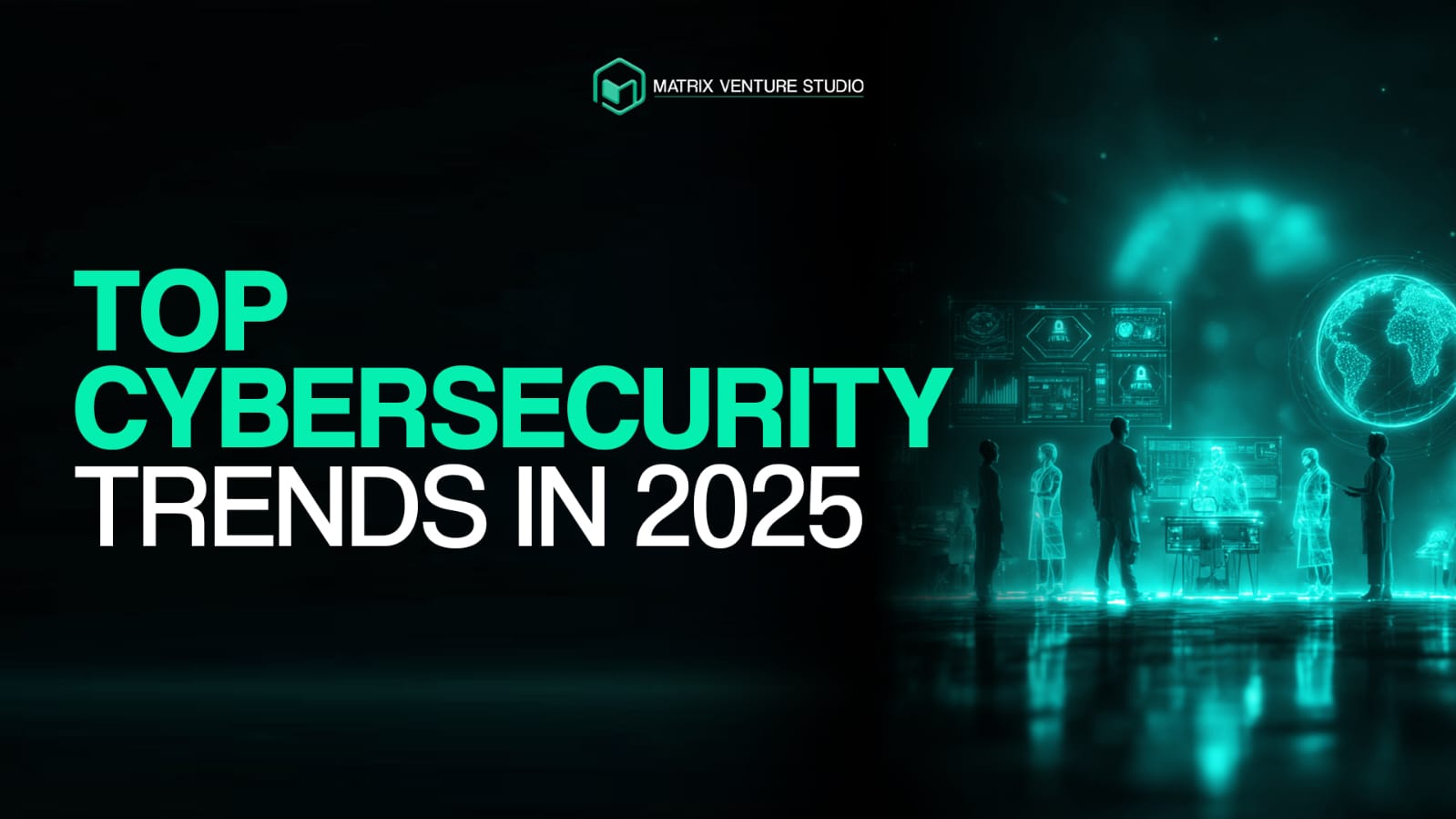Top Cybersecurity Trends in Canada for 2025
We’ve seen organizations improve their security posture by combining strong internal controls with management of supplier and third-party risks. Are you managing third-party risks before or after they impact you?
— Charles Eckert, Partner, Cybersecurity, Privacy and Financial Crime, Government and Public Sector, PwC Canada
Cyber threats are evolving, and to keep pace, cybersecurity trends must adapt. So, what are the key cybersecurity trends shaping the Canadian Cybersecurity landscape in 2025?
Key Cybersecurity Trends Shaping Canada
Last year, in 2024, a sophisticated ransomware attack brought Canada’s largest healthcare networks to a standstill. Patient care was disrupted, surgeries were postponed, and sensitive data was threatened.
But there were many other such breaches in recent years, underscoring the rising vulnerability of critical sectors across Canada.
While organizations raced to adopt advanced technologies, cybercriminals exploited security gaps.
Result: The Nation’s economy and public trust were at risk.
With such incidents, Canada must evolve its cybersecurity game to keep pace with the escalating threat landscape.
1. Growth in the Canadian Cybersecurity Market
Canada is a global leader in cybersecurity, with a robust ecosystem of innovative companies and a strong commitment to protecting critical infrastructure.
In 2023, the Canadian Cybersecurity Market surged to an impressive $11.68 billion, setting a precedent for its future trajectory. The anticipated Compound Annual Growth Rate (CAGR) of 10.99% is expected to propel the market to an estimated USD 19.67 billion by 2028.
The current cybersecurity market in Canada is experiencing robust, multi-billion-dollar growth, projected to grow at a CAGR of more than 11% and reach over USD 22 billion by 2030.
Based on a five-year historical analysis, the Canadian cybersecurity market is valued at USD 7.3 billion.
The growth is essentially driven by factors such as
– Increased frequency and sophistication of cyberattacks
– Rapid adoption of cloud services
– Expanded regulatory requirements for data protection
Organizations in Canada are investing heavily in cybersecurity solutions to
– Safeguard their digital assets
– Address the surge in ransomware and phishing incidents
– Maintain customer trust
But that’s not all.
Factors such as the demand for advanced threat detection, AI-powered security tools, and managed security services also accelerate cybersecurity expansion in Canada.
2. Escalating Attack Frequency
According to the National Cyber Threat Assessment 2025-2026 cyber threats to Canada are becoming more complex and sophisticated. These rising threats target Canadian national security and economic prosperity.
While the Canadian organizations have reported a decline in the number of cyberattacks year-over-year, the infection rates remain high. About 86.5% respondents in 2024 indicated a security incident in the past 12 months.
According to the report by CDW Canada, there has been increase in the success rates of the overall attack-to-incident. Though there is a decline in the number of cyberattacks and the infection rate, there is a surge in the success rate of attacks (incidents that are a result of an attack).
In a nutshell, there are about 20-25 incidents annually, Canadian employers experience annually. The attacks are across categories such as DoS, infiltration, breaches, and cloud incidents.
3. Canada’s Preparedness and AI Concerns
Canada moves toward safe and responsible artificial intelligence.
In March 2025, Government announced refreshed Advisory Council on Artificial Intelligence, the new Safe and Secure Artificial Intelligence Advisory Group, the publication of a guide for managers of AI systems and six new signatories to the voluntary AI code of conduct.
To ensure the fast developing technologies are trustworthy and serve the best interests of all Canadians, it is crucial that there is a responsible development and management of AI systems.
Generative AI can be a wonderful tool and a significant threat, as it can autonomously create content which deploys sophisticated cyber-attacks that can remain undetected with traditional security measures.
The Canadian government continues to take a leadership role in AI both domestically and internationally, committing $2.4 billion in Budget 2024 to help secure Canada’s AI advantage.
Investing in compute capacity and infrastructure, accelerating safe and responsible AI adoption and deployment, and supporting workers through skills training are some of the measures announced by the government.
Additionally, Canada continues to engage in domestic and international discussions supporting the creation of common standards and safeguards for generative AI systems, including by participating in international AI safety conferences and contributing to reports.
4. Healthcare Sector Under Siege & Rising Threats to the Public Sector
Canada’s grappling with some serious cybersecurity issues, especially when it comes to its healthcare sector. It’s pretty alarming – did you know that over 90% of the cyberattacks hitting healthcare are all about money? It’s not just about sneaking into patient records; these attacks are putting medical systems themselves at risk.
Furthermore, there was an increase in cyber threats against the public sector last year that made up a whopping 11% of all cyber incidents. As cybercriminals continue to evolve their tactics, Canada must foster collaboration between the public and private sectors to mitigate risks, enhance resilience, and ensure the nation’s digital defenses remain uncompromised.
5. Microsoft’s Expansion in Quebec
With a strategic focus on improving its digital capabilities, Microsoft announced a huge $500 million investment aimed primarily at augmenting its cybersecurity, AI, and other digital technologies in Quebec. This substantial financial commitment is earmarked for the expansion of Microsoft’s digital infrastructure within the province, particularly emphasizing the growth of its hyperscale cloud computing and AI infrastructure.
Forecasts indicate that this investment will lead to an astounding 750% increase in Microsoft’s local cloud infrastructure in Canada over the subsequent two years. Notably, this recent $500-million commitment is in addition to the $219 million (300 million Canadian dollars) that Microsoft had already poured into Quebec in the preceding three fiscal years.
6. Government Entities Under Siege in Canada
Canada’s critical infrastructure vulnerable to cyberattacks: report
In 2023, with cyberattacks on the rise, the government’s right in the crosshairs. Yep, they’re the prime targets, beating out even the health-care hustle. About 11.9% of these attacks decided to visit the government, coming in close behind the telecom and tech sector, clocking in at 14.1%.
Several factors make these entities irresistible to cybercriminals. Some of them are as follows:
- They safeguard vast troves of invaluable data, making them lucrative for data theft and espionage.
- The perception that government bodies possess boundless financial reservoirs makes them tempting ransomware targets. Many governmental bodies grapple with outdated legacy systems, making them easier prey.
- There’s a palpable challenge in recruiting and retaining cybersecurity experts, further exacerbating their defenselessness.
Given these circumstances, it is evident that cybercriminals have their eyes set on the Canadian government and public-sector for the foreseeable future. That’s going to raise some big concerns for Canada’s national security and how it protects our personal data.
The Rise of Cybersecurity
With the rise in cyber threats there has been a surge in cybersecurity efforts in Canada. While the country has been pouring money into tech and the cybersecurity market is booming, cyberattacks, especially in healthcare and government sectors, have been consistently on the rise both in consistency and sophistication. Raising concerns not in terms of financially but in terms of disruption of critical medical cases.
The rising AI-based threats are adding fuel to the fire. For Canada to stay ahead of the game, it really needs to team up, get creative, and step up its education game. They’re trying to find that sweet spot between growing their digital prowess and staying tough against threats.




